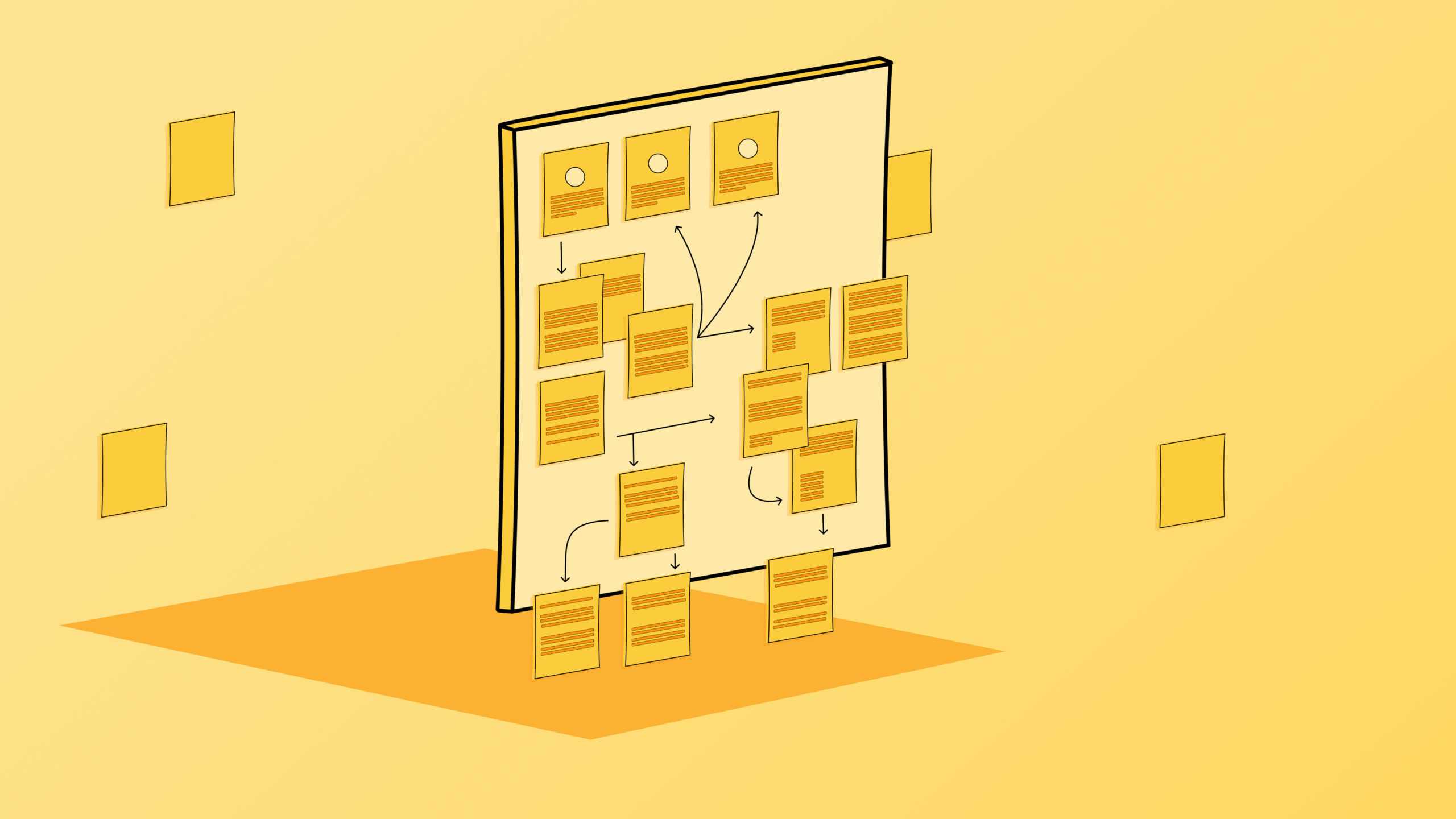

Blog

How to make a software development team successful?
It takes a village to build a great digital product. Or rather a great development team with technical expertise. But because software development is such an iterative process and is composed of many stages, you naturally need someone to organize it. Someone who thinks outside the box, who keeps team members of software development teams engaged and motivated. This is the role of a product owner, project manager or product manager.
How can product owners promote a sense of enthusiasm within the software development teams? How to boost development teams’ engagement? What are the creative ways to involve the team members and appreciate their development efforts? Let me tell you about my approach (and maybe spill a few tips and tricks about agile teams along the way).
This will constitute the first part of the article. In the second part, I’ll discuss:
- the key differences between product owner and product manager,
- the role of a PO in a startup,
- how non-technical CEO can manage development teams,
- whether product owner must have technical skills.
Let’s talk about dev team engagement
For me, there are two areas in which you can take care of team engagement as a part of software project management. The first one is about meetings and running successful, creative, and effective gatherings by building a positive environment for employees. The second one is far more advanced – it’s about team engagement not only in the current project but in their workplace.
But before we dive into the subject, there’s an article written by our head UX/UI designer – How designer–developer collaborations changed the way we think about projects from which you can get to know about this particular teamwork dynamic and culture. How does the team cohesion of software developers and designers work? Check it out!
Why is development team engagement important?
Burnout is a contrast to engagement – this is when employees feel a lack of motivation, they’re exhausted, which translates to poor and ineffective work. There’s no dedication in their work, no willingness to do something right. So why is the role of the product owner so vital? To prevent such a situation.
My task as a product owner is to engage and support my team. It’s a part of team building to ensure that everyone – all the software engineers and designers – are actively involved, accountable for their work, and collaborating freely on every step of the project. Thanks to this, you get increased team’s performance, well-executed projects and motivated employees.
Now, let’s move on to two areas of software development team engagement.


The first area – team members’ meetings
We can try to involve the team members during various meetings that are present in Agile software development. These are sprint plannings and reviews, along with figuring out the features and building a whole application. Here, the team member engagement will be about whether or not we take appropriate breaks and is the agile team invested in the conversation.
By observing people’s behaviour, we can react accordingly – propose 5 minutes off or change the subject and engage the team members in different activities, like coming up with new ideas for the project. The point is to distract the brain for a little while to focus on the issue all over again.
Face-to-face vs remote development teams
It’s great when we can meet in our office on such meetings – there are no distractions, and we have complete focus on the goal and, more importantly, more control over the situation. But sometimes, we have to do it remotely, and that’s when it’s getting complicated. If all the team members have their cameras on, then it’s not so bad – we can manage it. But what if they don’t? Remote work can be challenging – everyone sits in their home offices behind the computers with at least a few distractions around them – the notifications popping every now and then, noise coming from outside, etc.
What to do then? There are a few ways to make remote teams work:
- Ask questions – think outside the box, gain their attention, and engage the employees with challenging and demanding questions. Let them have their share in the project.
- Ask for cameras on – before any video call, ask the remote workers about turning them anyway. It’s no harm to ask, right?
- Initiate the breaks – at the beginning of the meeting, suggest the team to tell you whenever they’d feel like they need a break and initiate it yourself. Even 2-minute ones can make a difference.
- Come up with new ways to mundane work – proposing planning poker or sharing Miro board are just two of many strategies to make the process more engaging for the team. Thanks to this, the team members have their part of the work, but instead of doing it like always, we can have fun and still do everything required.
However, no miracle solution will work with every scenario. Each meeting and team in the software development process is different, so you have to approach them accordingly. Some people will naturally join the discussion, while other teams would rather abstain from it. So the one thing that you can do is observe the team dynamics and adjust the tempo of the meeting, tasks and discussion to them.
The second area – overall involvement of the software development team
This process is far more complicated – it encompasses activities beyond the product owner’s role. To increase employee engagement in the workplace, we need to create a positive environment. That includes transparency, open communication and self-efficacy.
What are our tips to boost engagement in the company? How does company culture look like in our case?
Regular feedback
At Gorrion, once a month, we hold a meeting with designers and developers. We gather the feedback – how are they feeling in the projects, their likes and dislikes about the process and areas for improvement. Thanks to the information, we can work out their overall impression and plan a dedicated action plan to improve employee satisfaction.
The purpose
Show each team member the benefits of their work – to work well, every person needs to have the feeling of purpose, that what they’re doing makes sense. There can be employees who are great in the project and do a nice job, and everyone is happy, but they may be dissatisfied because they don’t realize how their work affects the functioning of the whole team.
It’s the reason why we tend to engage everyone from the early stages of the software development project – in that way, the team members get to know the idea from its very core along with the business and problems they’re about to solve. We work on it together. We’re on the same page, even when working remotely. We encourage the software development teams to take a stand that creates a great benefit for the software developers and designers in the shape of good vibes, new skills, and better teamwork. In my opinion, if you have a goal in your mind, it’s easier to visualize the effect. Thus, the whole process gets simpler, even for new team members.
Challenge
To engage employees daily, you should challenge them. It can be done in all projects – every once in a while, set your team quick challenges. For developers, it can be building the same feature in fewer days but of equal quality. And then praise them on the work done. Such training can boost the productivity of software developers and help create team affiliation. It’s one of the most effective team building activities.
Autonomy
Showing your team members that they have a real impact on the project is great stimulation for their engagement. At Gorrion, everybody working on a project contribute to creating an app – we initiate new features and designs, set and organize tasks, divide the work. In other words, we have a team that’s not only strong in technical know-how but also focuses on business needs. And believe me, it’s much better this way.
Inspiration
Inspire them in any way you can. Recommend a podcast, a book or an online course – sharing your experience is also helpful in creating trust and connection between the team members. Plus, it’s a way of engaging team members and, ultimately, building a positive company culture.
After-work activities
Spending time outside of work is also a great way to bond with your team. That’s why many companies organize team building events. The more people know each other, the better the collaboration. As a result, you get strong teams with success in mind.
Conflict management
Another essential aspect that has to be resolved as fast as possible – the quicker the reaction, the better for the team performance. A team in which there’s no conflict is immediately more productive and effective in their work.
The role of a PO in a startup
Now that we know all about team building, let’s move on to the role of product owners in software development – people that take part in team building and delivering a product’s value.
In the beginning, all the roles are a bit blurry in the startups – you work in a small team, so everybody is responsible for everything. Hence, a founder is ahead of a business and a marketing specialist, business analyst, or developer. And that may work for a while. But as the business grows, there may be too much to do and let’s be honest – it’s extremely time-consuming. This product maturity means that you need someone dedicated to the job, someone who will help it grow and prosper. Someone for the long term. So you expand your software development team and hire an experienced product owner/product manager to take care of it. This is the first situation.
Solutions for non-technical CEOs
But what if you’re not really into technical staff? How to manage a software development team without a technical background? Sure, just like in the first example, you can do it all by yourself – so hire an IT team and get involved in software project management. Skills that you need to manage your team include delegating tasks, solving various problems, managing risk in the project, focusing on core values, and, most importantly, choosing the right team. It’s a lot, but it’s doable if you want to do it for real.
However, there’s another option. You can outsource a software development team with a product owner and have all the skills and experience in one. In this way, you don’t have to worry about creating a team and all the tasks connected with that, like building trust, which can be time-consuming and costly. Here, you get a team that knows one another, works well together and ultimately, can focus on delivering a product that will bring value to the market.
Another perk of outsourcing software development is that if you’re a non-technical CEO/founder, the product owner will be your connection to the developers, a middleman if you like. Thanks to this, a huge part of the responsibilities will be transferred to an experienced person who will help your product grow, and you can still take part in the process. But on a smaller scale. Sounds great, right?
Here, the punchline is easy – no matter what you decide, you should consider growth within your company – its business needs. That’s the key.
The difference between a PM and a PO
Do you need a product manager (PM) and product owner (PO) in your startup company? Before I start writing an answer to this question, let’s understand the role of each position. In other words, the difference between product owner and product manager. There are plenty of articles that talk about this topic in more detail, so here I’m going to characterize them briefly.
First of all, while both roles need strong, soft skills and make sure that the core value is achieved, the product owner is much more focused on the users’ needs and strives to answer them during project implementation. On the other hand, the product manager is more responsible for the business analysis and everything related to it – competitors analysis, strategy, validation, etc. This role, or should I rather say job, is much more independent and exists outside the Scrum team. That means all product managers can play the role of PO in agile project management.
What about PO’s technical skills?
Is it necessary for a product owner/product manager to have technical knowledge during software project management? Do they have to know how to code? For me, not really. Sure, it can come in handy, but it’s not a must-have. Anyway, sooner or later, they’ll understand the languages, technologies, requirements, product’s cycles from the teams. They’ll naturally gain this knowledge that will allow them to talk about the software product, prioritize the tasks in the backlog and combine users’ needs with the potential of technologies. And the rest is left to the technical teams – developers and designers.
Keep in mind what’s we’ve been talking about throughout this article – PO’s role is to guide the team and take care of the product. Everything else – the code, usability tests, designs – should be left to the people accountable for that. They’re the ones that have the knowledge and tools to create that.
Final words
Keeping the development team engaged during project management isn’t a piece of cake – it’s a demanding process. But the results that come from empowered and motivated software development teams is something extraordinary. Working with these people makes it worth all the effort. And ultimately, the product’s success.
A team must feel like a team – every member should feel like a part of it, even during remote work – we can count on each other, learn new things and recognize other’s work. Thanks to that, we can grow together and turn innovative ideas into beautifully designed and secured digital products. And that’s why the role of a product owner is so crucial in organizations.


Have a project in mind?
Let’s meet - book a free consultation and we’ll get back to you within 24 hrs.


